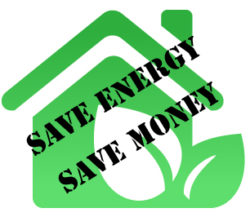North Texas winter temperatures have already broken a seven-year low record and winter is not nearly over. Using energy wisely and making a few household changes can make a big difference in natural gas and other energy bills. The steps below can help decrease amount of energy used.
- Seal leaks around windows, doors and openings such as pipes or ducts using caulking and weather stripping.
- Run washing machine and clothes dryer with a full load. Ensure that dryer is vented properly to the outside.
- Plumbing and piping penetrations on roof and sides of house can cause some of the worst air leaks. Insulate around these openings including gaps around the chimney.
- Put water-flow restrictors in showerheads and faucets to reduce hot water use. Also, fix any leaking faucets; a drip once every second can waste about 1,600 gallons of water a year.
- Check attic to determine if insulation is sufficient. Also check the crawl-space under the house or the basement. Adding flooring insulation is one of the best ways to lower energy use and save money.
- During the winter, set thermostat to 68 degrees Fahrenheit during the day.
- Install a programmable or smart thermostat to turn down temperatures automatically. Lowering thermostat at night can save about 10 percent, or $10 for every $100 of heating costs.
- Avoid blocking vents and air returns with furniture, area rugs or draperies. Have heating contractor inspect and seal ductwork to ensure adequate air flow and eliminate heat loss. Leaky ducts can lose up to one-fifth of the air passing through them.
- Close dampers on unused fireplaces. Leaving damper open is like keeping a window open during the winter because it allows warm air to go up the chimney.
- Let in the sun’s warmth on sunny days by opening draperies and blinds; close them at night to insulate against cold air from outside.
- Have a qualified appliance repair or heating service company inspect your gas furnaces and appliances annually.
- Change or clean heating and air conditioning filters once a month.
- Set water heater’s temperature at 120 degrees. Lowering the setting could cut water heating cost by 20 percent. Another tip is to place an insulating blanket around an older water heater tank to retain heat.
Source: www.atmosenergy.com.


